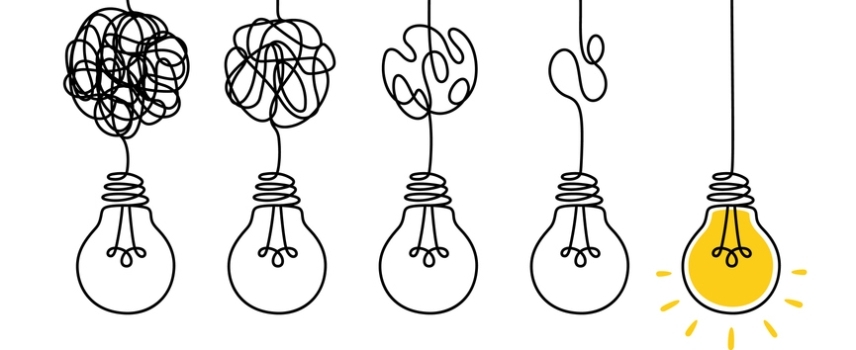We’ve all been there. You’re stuck in a job that feels like it’s slowly draining your soul, or maybe your relationship feels like it’s circling the drain. Or perhaps life just feels… off. The discomfort is real, but here’s the million-dollar question: is the problem the situation itself, or is it the way you’re looking at it?
Spoiler alert: figuring this out isn’t easy. But it’s also the difference between spinning your wheels in frustration and actually making progress. So let’s break it down.
When the Situation Is the Problem
Sometimes, life really does suck because the situation you’re in sucks. Toxic workplaces, unhealthy relationships, or living situations that make you feel like you’re starring in a survival reality show—these are all external problems. And no amount of positive thinking or “just be grateful” mantras are going to fix them.
Take a job, for example. Maybe it demands 60-hour weeks, offers zero support, and leaves you feeling like a cog in a very broken machine. Or maybe your partner dismisses your feelings so often that you’ve started to wonder if you’re invisible. Or worse, you’re in an abusive situation where every day feels like a battle just to keep your head above water.
These aren’t mindset issues. These are real, external problems that need real, external solutions. The fix? Assessment and action.
- Toxic work environment? Start setting boundaries (if you can) or dust off that résumé.
- Unhealthy relationship? Time to reevaluate—or maybe call in a therapist to help you sort through the mess.
- Abusive situation? Your safety comes first. Find a way out, and don’t do it alone.
The bottom line: if the situation is the problem, no amount of “changing your perspective” is going to make it better. You need to change the situation.
When the Problem Is You (Yeah, I Said It)
Now, let’s talk about the other side of the coin. Sometimes, the problem isn’t the situation—it’s the way you’re interpreting it.
Here’s a dead giveaway: patterns. If you’ve switched jobs five times in three years and still end up clashing with your coworkers, it might not be the jobs. If every relationship you’ve been in feels like a rollercoaster of drama and disappointment, maybe it’s time to look inward.
For example, anxiety has a sneaky way of turning molehills into mountains. It primes you to see danger everywhere, even when it’s not there. That minor disagreement with your partner? Suddenly, it feels like rejection. That one piece of feedback from your boss? Proof that you’re terrible at your job.
And here’s the kicker: when you’re stuck in this mindset, you’ll keep jumping from one job, one relationship, or one city to the next, thinking the next thing will fix it. Spoiler: it won’t.
The Ripple Effect of Clarity
Here’s where things get interesting. Bowen family systems theory (fancy name, I know) has this concept called “differentiation of self.” Basically, it’s your ability to separate your emotions from your rational thoughts. And it’s a game-changer.
Someone with low differentiation? They’ll quit a job the second they feel stressed, mistaking temporary discomfort for a toxic environment. Someone with high differentiation? They’ll pause, assess, and figure out whether the stress is coming from the job itself or their own inner dialogue.
The takeaway? The more you can manage your emotions, the better you’ll be at figuring out whether the problem is external or internal.
So, What Can You Do About It?
Whether the issue is out there or in your head, there are steps you can take to get some clarity and stop spinning your wheels.
- Spot the Patterns
Start paying attention to recurring themes. Are you always the one leaving jobs, ending friendships, or feeling dissatisfied? Journaling can help you connect the dots. - Assess the Situation
If you think the problem might be external, get specific. What exactly is making you miserable? Is there clear evidence that your workplace, relationship, or environment is unhealthy? Talk it out with someone you trust—or better yet, a therapist. - Learn to Self-Regulate
When anxiety takes the wheel, it’s easy to overreact to minor stressors. Mindfulness, deep breathing, or grounding techniques can help you slow down and keep your emotions in check. - Balance Emotion and Logic
Before making any big decisions, ask yourself: am I acting on pure emotion, or have I thought this through? Bowen’s concept of differentiation is all about finding that sweet spot between feeling and thinking. - Get Professional Help
Therapy isn’t just for when things are falling apart. A good therapist can help you figure out whether your discomfort is an internal struggle, an external problem, or a messy mix of both.
The Bottom Line
Here’s the deal: life is messy. Sometimes the problem is the world around you, and sometimes it’s the world inside you. Either way, the goal isn’t perfection—it’s progress. It’s about learning to navigate life with a little more clarity, a little more balance, and a lot more self-awareness.
So the next time you’re feeling stuck, ask yourself: is this a situation I need to change, or a mindset I need to shift? The answer might surprise you. And either way, it’s an opportunity to grow.
Because at the end of the day, understanding yourself is the first step to understanding what you truly need. And that’s where the real magic happens.
References
Bowen, M. (1978). Family therapy in clinical practice. Jason Aronson.




